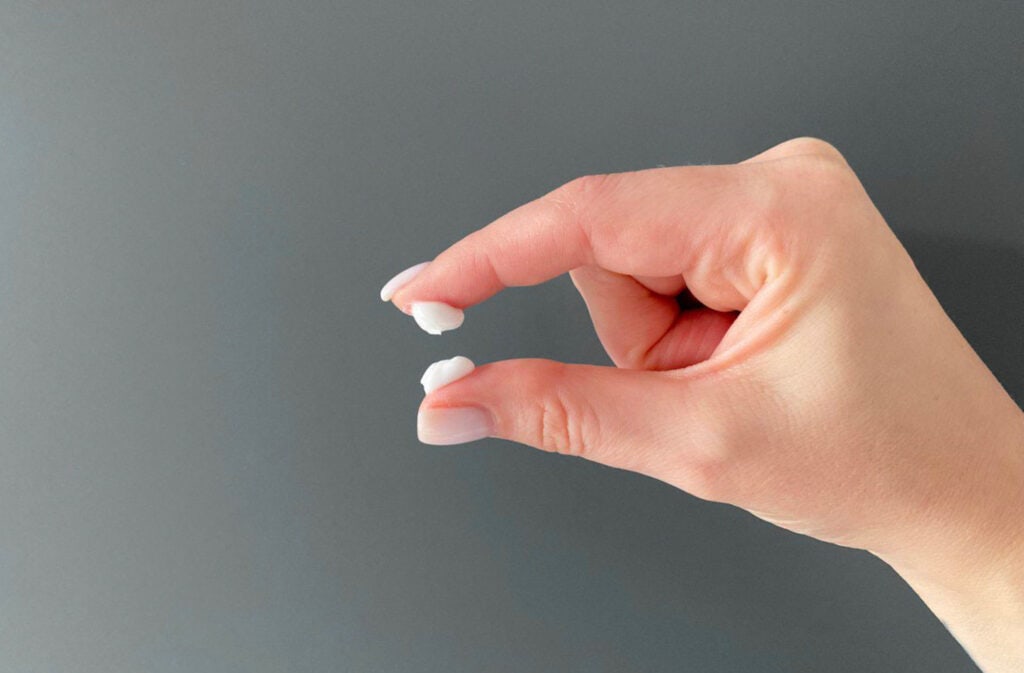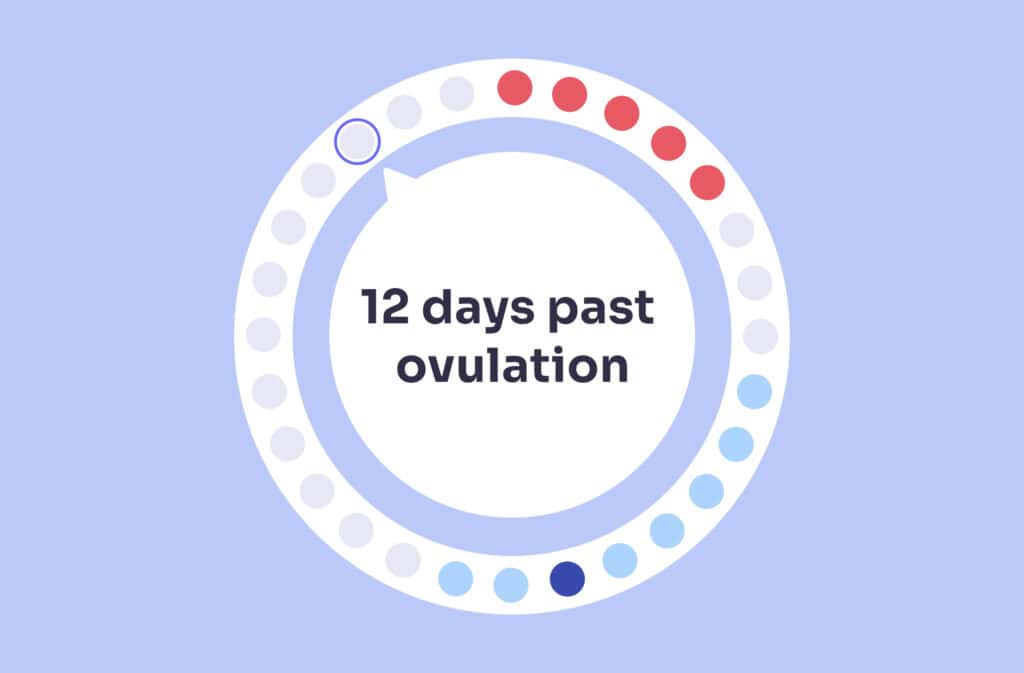Femia > Health Library > Your cycle > Health > Milky white discharge: What it means and when to seek medical advice
Milky white discharge: What it means and when to seek medical advice

- Updated Feb 25, 2025
- Published
CRAFTED BY HUMAN
Crafted by human At Femia, we provide accurate and up-to-date information at every stage of your journey, from trying to conceive, pregnancy and postnatal support. All content is created by a real person based on in-depth research and own professional experience. Femia ensures that you will receive expert advice, strict accuracy and a personalized approach from our authors/medical experts. Learn more about our editorial policy.
FACT CHECKED
Fact checked At Femia Health, we maintain the highest standards of editorial excellence in delivering content focused on helping you conceive, guiding you through pregnancy, and supporting you postpartum. Explore our content review principles to learn how we ensure the accuracy and quality of our health and lifestyle tips for every stage of your journey.
Thick, milky white discharge usually appears after ovulation, during the luteal phase (a period between ovulation and your next menstruation), and in early pregnancy.
Milky white discharge throughout the reproductive cycle is normal, and it can also change in appearance and color depending on the phase of the cycle.
However, having discharge with an unusual smell, pain, swelling, pus, or a change in discharge color to green or grey may be a sign of infection, which should be addressed by a healthcare provider.
Our vagina, uterus, and cervix produce vaginal discharge to keep the vagina moist and clean and prevent infections.
Vaginal discharge can vary in color, from clear to off-white or milky white. It may also vary in amount and consistency, from dry to sticky, slippery, thin, or thick, as your hormones fluctuate during the different stages of your menstrual cycle. This means that having a milky white discharge, also known as cloudy white discharge, with varying consistency is a normal indicator of your reproductive and vaginal health. But, when does this milky discharge becomes a concern? Let’s discuss it in detail.

What does milky white discharge mean?
So, what does white milky discharge mean? Milky white discharge typically occurs in two phases of your reproductive cycle. The first one is after ovulation, and the second one is during early pregnancy.
1. Milky white discharge after ovulation
During or right after your ovulation phase, the vaginal mucus appears milky white and thick to make it easy for the sperm to travel to the uterus and meet the egg for fertilization.
After ovulation, progesterone levels increase and estrogen levels decrease to thicken the uterine lining for implantation. This also increases the release of thick, milky white discharge.
Milky white discharge or creamy discharge after ovulation is considered normal and an indicator of successful ovulation, as it indicates that your uterus is preparing for potential implantation.
2. Milky white discharge after conception
Similarly, discharge during early pregnancy appears thick and milky white, and occurs in greater amounts, as the body produces higher estrogen levels. This type of discharge prevents infection from entering the vagina and harming the fetus.
3. Milky white discharge during menstrual cycle
Other than the above two phases, the color and consistency of your vaginal discharge can change throughout the menstrual cycle and appear milky white, which is normal and a product of hormonal shifts.
White creamy discharge as an early pregnancy sign
Creamy white discharge before your period or menstrual phase is normal and may not always indicate pregnancy. However, you may notice thicker white discharge after ovulation if pregnant. This symptom of pregnancy will appear more abundant and noticeable than what you usually experience.
If you have noticed early signs of pregnancy, here’s when you can confirm with a pregnancy test:
- With an at-home pregnancy test, after the first or second day of your missed period if you have regular and on-time periods.
- With a beta-hcg blood test, after two to three weeks of your missed period if you don’t have regular periods.
In addition to missed periods, some other common pregnancy symptoms include:
- Nausea, vomiting, and morning sickness.
- Breast changes, like swollen or tender breasts.
- Fatigue.
- Frequent urination.
- Cramping.
- Spotting.
- Backaches.
- Mood swings.
👉Find out more: Brown discharge: Causes, meanings, and when to seek medical advice
@femia.fertility Your discharge says more than you think! 🌸 You can pinpoint when you're most fertile by tracking changes in cervical mucus! 🗓️ This natural method works more accurately when combined with Ovulation Predictor Kits (OPK). #learnontiktok #periodtok #womenshealth #femhealth #femcare #vagtok #femininehygiene #fakeblood #discharge #ovulation #fertilityawareness ♬ original sound - Femia fertility app
Creamy vs. egg white discharge: What’s the difference?
Here is a side-by-side comparison of creamy vs. egg white discharge:
| Features | Creamy Discharge | Egg White Discharge |
|---|---|---|
| Appearance | Sticky and thick texture. | Watery, clear, stretchy, slippery, or elastic. |
| Color | White, milky white, or off-white color. | Slightly cloudy or transparent color. |
| Timing | After ovulation. | Just before ovulation. |
| Purpose | To prepare the uterus for implantation and facilitate sperm transport and survival. | As a result of estrogen increase, hormonal change in the body, and preparation of the body for pregnancy. |
Other factors that can cause white discharge
Apart from the phases of the reproductive cycle, like ovulation or pregnancy, some other lifestyle factors may also cause different types of white discharge, like milky discharge, cloudy white discharge, or others. For example:
1. Sexual intercourse or masturbation
Another factor that causes thick, milky white or clear, slippery, and stretchy discharge is sexual activity, masturbation, or when a person is sexually aroused. It is the body’s natural response to sexual pleasure and appears to keep the vagina lubricated.
2. Medications
Using certain medications, like contraceptives or antibiotics, that lead to hormonal changes can increase discharge and cause changes in appearance and color.
3. Yeast infections
You may also experience thick, white, or clumpy discharge if you have a vaginal yeast infection. This will often be accompanied by a strong odor, itchiness, pain, or vaginal burning, so it is easy to differentiate from other types of normal discharge.
👉Find out more: Pink discharge: Causes and what you can do about it
When to seek medical advice for milky white discharge
Milky white discharge is considered normal throughout your reproductive cycle. However, you may have to consult a healthcare provider if the milky white discharge comes with:

- Pus
- Swelling
- Pain
- Itching
- Color changes to green or grey
- Resembles cottage cheese
- Fishy smell or unusual odor
- Pain during urination
In addition to these symptoms, if you experience any other unusual changes in your vaginal discharge regarding its color, odor, or appearance, or if you experience any discomfort or pain, consult a healthcare provider for a personalized checkup.

Questions from the Femia community
Can diet affect the appearance or consistency of my vaginal discharge?
Yes, your diet can affect the appearance and consistency of your vaginal discharge. A healthy diet helps maintain normal vaginal flora and prevents vaginal infections. Similarly, an unhealthy diet, like a high sugar diet, can disrupt vaginal pH balance, kill off the good bacteria in your vagina, and increase the risk of vaginal infections, like bacterial vaginosis. This can affect the color, consistency, and odor of your vaginal discharge.
Is it normal to have white discharge throughout my entire menstrual cycle?
Yes, it's normal to have white discharge throughout your menstrual cycle apart from when you have periods. However, the consistency and amount will vary throughout the cycle. For example, you will experience milky or creamy discharge after ovulation or sexual intercourse and egg-white discharge before ovulation.
Can stress cause changes in my discharge?
Mild to moderate stress may not cause changes in your discharge. However, chronic or persistent stress may increase your cortisol levels and disturb the production of fertility hormones, which may cause changes or heavier-than-normal discharge.
Should I worry if my discharge is cloudy white?
Cloudy white discharge is normal and not a concern unless it is accompanied by a foul odor or pain. So, if you experience unusual odor, irritation, itchiness, pain, or swelling with cloudy white discharge, it is best to consult a healthcare provider to identify the cause.
The bottom line
It is normal to experience white, creamy discharge after ovulation, during early pregnancy or during different phases of your reproductive cycle, especially the lutéal phase. This is due to hormonal changes in the body, to prevent infections from entering the vagina, and to keep the vagina lubricated. It can also occur during sexual arousal or while using antibiotics or contraceptives.
However, it is important to keep in mind that milky white, cloudy, creamy or slippery, thick discharge is normal until it appears with unusual signs, like irritability, itchiness, pain, burning, or swelling.
Greenish or grey color discharge may also be a sign of vaginal infections. So, if you experience these unusual symptoms with vaginal discharge, it is best to consult a healthcare provider for a personalized checkup.
References
- “Vaginal Discharge.” Cleveland Clinic, 9 Sept. 2024, my.clevelandclinic.org/health/symptoms/4719-vaginal-discharge#care-and-treatment.
- “Cervical Mucus.” Cleveland Clinic, 3 July 2024, my.clevelandclinic.org/health/body/21957-cervical-mucus.
- “Pregnancy Tests.” Cleveland Clinic, 9 Sept. 2024, my.clevelandclinic.org/health/diagnostics/9703-pregnancy-tests.
- Neggers, Yasmin H., et al. “Dietary Intake of Selected Nutrients Affects Bacterial Vaginosis in Women , ,3.” Journal of Nutrition, vol. 137, no. 9, Sept. 2007, pp. 2128–33. https://doi.org/10.1093/jn/137.9.2128.

Is sperm good for the baby during pregnancy? 80% of couples worry about this. Expert insights from Femia.

Can you take antidepressants while pregnant? Find an all-encompassing guide to antidepressants and pregnancy with risks, tips, safe options, and more.

Learn about the symptoms at 12 days past ovulation (12 DPO), including signs of early pregnancy, and discover the best time to confirm with a pregnancy test. Expert advice from Femia.

